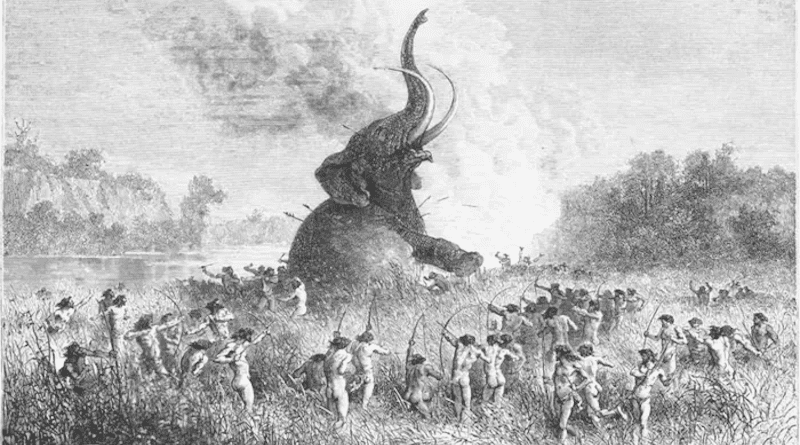People, Not Climate, Caused Decline Of Giant Mammals
About 100,000 years ago, the first modern humans migrated out of Africa in large numbers. They were eminent at adapting to new habitats, and they settled in virtually every kind of landscape – from deserts to jungles to the icy taiga in the far north.
Part of the success was human’s ability to hunt large animals. With clever hunting techniques and specially built weapons, they perfected the art of killing even the most dangerous mammals.
But unfortunately, the great success of our ancestors came at the expense of the other large mammals.
It is well-known that numerous large species went extinct during the time of the world-wide colonization by modern humans. Now, new research from Aarhus University reveals that those large mammals that survived, also experienced a dramatic decline.
By studying the DNA of 139 living species of large mammals, the scientists have been able to show that abundances of almost all species fell dramatically about 50,000 years ago.
This is according to Jens-Christian Svenning, a professor and head of the Danish National Research Foundation’s Center for Ecological Dynamics in a Novel Biosphere (ECONOVO) at Aarhus University, and the initiator of the study.
“We’ve studied the evolution of large mammalian populations over the past 750,000 years. For the first 700,000 years, the populations were fairly stable, but 50,000 years ago the curve broke and populations fell dramatically and never recovered,” he says, and continues:
“For the past 800,000 years, the globe has fluctuated between ice ages and interglacial periods about every 100,000 years. If climate was the cause, we should see greater fluctuations when the climate changed prior to 50.000 years ago. But we don’t. Humans are therefore the most likely explanation.”
Who killed the large mammals?
For decades, scientists have debated what is behind the extinction or rapid decline of large mammals over the past 50,000 years.
On one side are scientists who believe that rapid and severe fluctuations in the climate are the main explanation. For example, they believe that the woolly mammoth went extinct because the cold mammoth steppe largely disappeared.
On the opposite side are a group who believe that the prevalence of modern humans (Homo sapiens) is the explanation. They believe that our ancestors hunted the animals to such an extent that they either became completely extinct or were severely decimated.
So far, some of the most important evidence in the debate has been fossils from the past 50,000 years. They show that the strong, selective extinction of large animals in time and space roughly matches the spread of modern humans around the globe. Therefore, the extinction of animals can hardly be linked to climate. Nevertheless, the debate continues.
The new study presents brand new data that sheds new light on the debate. By looking at the DNA of 139 large living mammals – species that have survived for the past 50,000 years without becoming extinct – the researchers can show that the populations of these animals have also declined over the period. This development seems to be linked to the spread of humans and not climate change.

